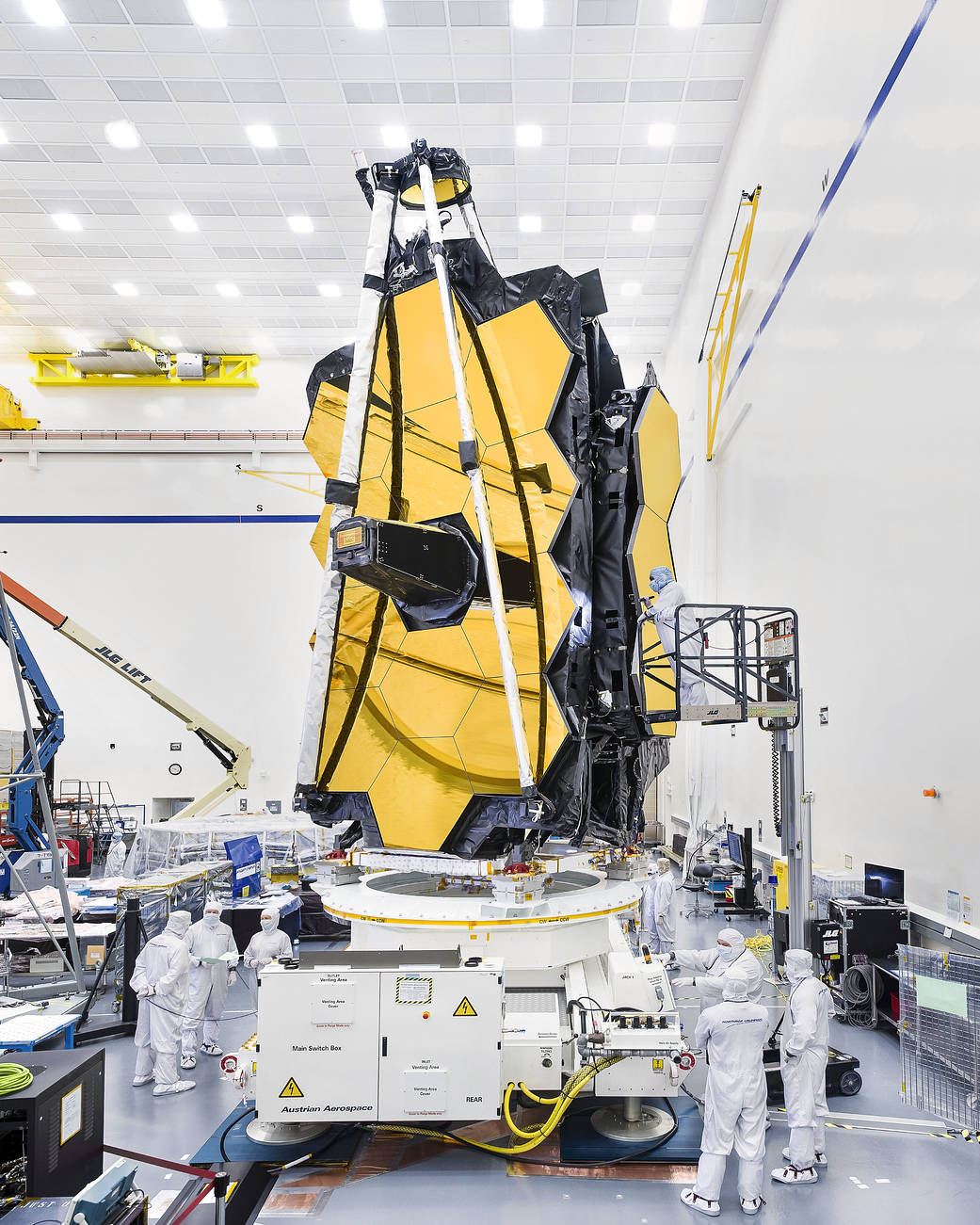NASA’s James Webb Space Telescope requires a primary mirror so large that it would not fit inside any existing rockets as one single, large mirror. Because of this, Webb is equipped with a revolutionary set of 18 hexagonal mirror segments that are able to fold to fit inside the rocket fairing. Their honeycomb like arrangement allows for Webb to have the largest possible reflective surface area to make observations, with the least amount of dead space in between each.
The overall power and effectiveness of a telescope is primarily determined by how big a mirror it has. Just as a large bucket standing out in the rain collects more water, a larger mirror can collect more light from objects in the distant cosmos. If circular mirror segments were used, there would be substantial inactive areas at the boundaries of each segment, resulting in less total mirror area and a less capable observatory.
This efficient honeycomb pattern commonly found in beehives allows each mirror to perfectly fit together at their edges, effectively creating a singular and massively powerful unit. This arrangement also makes a roughly circular overall primary mirror shape, which is desired as it focuses light into the most compact region on the detectors, and provides the most readily analyzed images. An oval mirror, for example, would give images that are elongated in one direction.
Each gold-plated hexagon is equipped with a set of actuators, which are small devices that allow for impressively accurate fine-tuning of their position, angle, and even curvature. If adjustments need to be made, they can be precisely applied to each, without disturbing the others while in space. These actuators allow for Webb’s mirrors, instruments and optics to work perfectly in unison to create supremely accurate and powerful observations. In total, Webb’s mirror is nearly seven times the size of its scientific predecessor, the Hubble Space Telescope. With a much larger primary mirror, Webb will build upon and add to the extraordinary body of knowledge that Hubble and other space telescopes like Chandra, Spitzer, and COBE have provided the world’s scientific community.
While Webb’s spacecraft bus and sunshield undergo continued environmental testing to ensure preparedness for the rigors of a rocket launch to space, technicians and engineers recently completed another series of live mirror preparations called hexapod tests, which are designed to ensure both Webb’s hardware that control the mirrors, and software programs that guide them are functioning optimally.
The James Webb Space Telescope will be the world’s premier space science observatory when it launches in 2021. Webb will solve mysteries of our solar system, look beyond to distant worlds around other stars, and probe the mysterious structures and origins of our universe and our place in it. Webb is an international project led by NASA with its partners, the ESA (European Space Agency) and the Canadian Space Agency.
For more information about the Webb, visit: www.NASA.gov/webb
For more information on Webb’s mirrors: https://jwst.nasa.gov/mirrors.html
By Thaddeus CesariNASA’s Goddard Space Flight Center
Image Credit: NASA/Chris Gunn




























